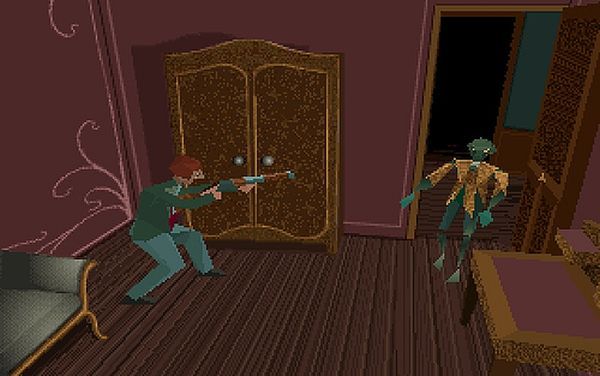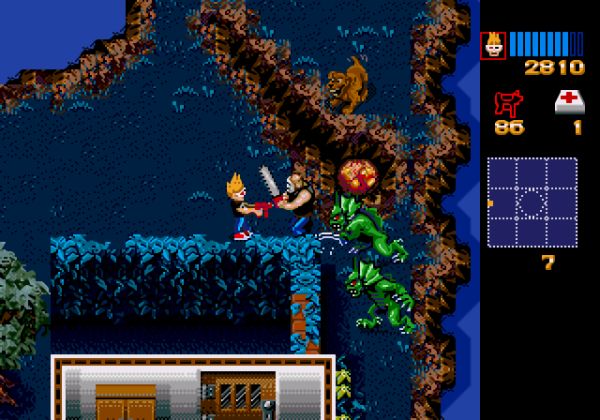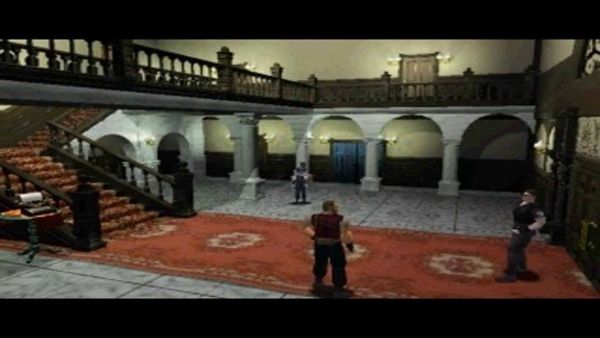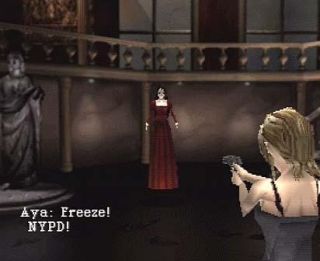
Video games are a diverse and long-lasting medium, with something to offer everybody. From those obsessed with scores and bragging rights, to more relaxed individuals looking for an enthralling story with limited interaction, to gamers who spend upwards of 100 hours in open worlds with random battles. Then there are oddballs like me, who just want to get the crap scared out of us.
With horror games currently experiencing a much-needed boost in popularity, now is the perfect time to glance back at the genre’s rich history. In Part One, we took a look at the infancy of horror in gaming… from 3D Monster Maze to the much derided Friday the 13th adaptation. Today, we’ll be shining a spotlight on the titles that helped mold the genre into what it is today.
Cinematic Flair
Infogrames’ Alone in the Dark hit in 1992 for the PC, unknowingly altering the course of the horror genre for the next decade. While Capcom’s flagship zombie franchise is famous for its pre-rendered backgrounds and static camera angles, the original Alone in the Dark was the progenitor of that gameplay style. With an eye-catching cinematic flair, this game single-handedly shaped our perception of what “scary” games could look like.

Aesthetics aside, Alone in the Dark influenced future titles through its core gameplay ideas as well. Firstly, you are given the option of choosing between a male (Edward Carnby) or female (Emily Hartwood) protagonist. Rather than relying on combat, it also introduced the idea of defeating otherwise invulnerable enemies through unconventional methods, such as solving puzzles. It also allowed players to avoid conflict entirely through stealth, an idea still present in recent games like The Evil Within.
A mostly nonlinear experience also helped set the stage for later games of the genre. Aside from the attic and cavern portions, Alone in the Dark’s mansion could be completed section-by-section in whichever order was decided by the player, with progress marked by the completion of puzzles and discovery of key items. Alone in the Dark is arguably the most influential title to the modern horror game, though I’d personally still give that accolade to the earlier Sweet Home.
Lucasarts’ Zombies Ate My Neighbors (known simply as Zombies in PAL regions) came in 1993, bringing with it an entirely new and frantic energy. Serving as a parody of horror films and games alike, it brought 2D run-and-gun gameplay and a zany sense of humor to gamers everywhere. Controlling either Zeke or Julie (or both in cooperative mode), players were charged with roaming the world while rescuing innocent people from werewolves, possessed dolls, chainsaw madmen, aliens, vampires, and (of course!) zombies, among other familiar enemies.

Its collection of foes covered a wide breadth of sources, from classic Universal monsters to evil dolls as seen in Child’s Play. As such, even this goofy little game held the potential to trigger the fears of those who played it. Chainsaw dude (seen above) always gave me a particular jolt of panic whenever he showed. Zombies Ate My Neighbors falls more on the comedic side, but its wide range of monsters is reason enough to include it.
In 1994, yet another Japan-exclusive title for the 3DO, Doctor Hauzer, became the first horror game rendered entirely in 3D. While it lacked traditional enemies, the ominous atmosphere of its sentient mansion more than made up for it. The rickety old house itself tries to kill you, utilizing puzzles, traps, and even furniture to do so. If you don’t see how this influenced the genre going forward, look harder! Even its sound design had nice attention to detail, with different footsteps depending on the surface of the flooring. This raised the bar for future games — and I, for one, appreciate it.
1995 presented Japan with Clock Tower for the Super Famicom, developed by Human Entertainment. It proved once and for all that horror can come in the simplest of packages, even in a point-and-click adventure game. Starring female protagonist Jennifer Simpson, the game tasks players with maneuvering her through the titular mansion… with the added caveat of having to avoid Scissorman, a relentless fiend with a gigantic pair of garden shears. Developers haven’t made a habit of doing horror games with this style of gameplay, but the concept of an invincible foe chasing players through the entire game eventually became a staple of the genre.
Mainstay Horror
At long last! Ladies and gentlemen, it pleases me so very, very much to reach this portion. In 1996, Capcom unleashed upon the world their flagship PlayStation game, Resident Evil, thus beginning my favorite series of all time. What originally began as a 3D remake of Sweet Home soon evolved into something more, something truly memorable.

As either Chris Redfield or Jill Valentine, players were tasked with exploring the secluded Spencer Mansion, home to Ozwell E. Spencer, the elusive founder of Umbrella Corporation. Narrowly avoiding the countless enemies and deadly mechanisms strewn throughout this isolated estate, gamers were presented with only a barebones story on the surface. The underlying tale of conspiracies and tragedy had to be pieced together from scattered notes, forcing everyone to work for it — a holdover from its Sweet Home heritage, no doubt.
Lead by Shinji Mikami, the development team sought to incorporate elements from all of the best horror games into one nice, shiny (and realistic for the time) game. Like Alone in the Dark, it featured multiple playable characters, pre-rendered backgrounds, and static camera angles. Taking inspiration from Dr. Hauzer, the house itself seemed determined to kill you through the use of deadly traps — but more than that, Resident Evil sought to outdo that game’s tremendous sound design. Zombies, monsters, and mutants of all kinds roamed the Spencer Mansion’s halls, yet the sounds and music truly thrust terror upon gamers. Shattering glass and the vicious snarls of ravenous Cerberus hounds echo in our memory to this day, and that was but one jump scare. Capcom knew what they had, and it was their marketing that coined the phrase “survival horror” and forever changed the way we view these types of titles.
And let’s not forget the contributions of Shiryou Sensen: War of the Dead, which was the first title to introduce the concept of magical boxes with endless storage space. If not for this idea, there may have been far more backtracking than we can even imagine. Those of us who have chased after Resident Evil 0’s infamous hookshot can attest to the difference a few simple boxes can make.
Mikami also brilliantly preyed upon common phobias when designing and implementing the game’s foes. Rabid dogs charge on screen without warning, giant spiders cling to walls and ceilings, and an enormous snake even arrives to tango once or twice. This ensures most anyone feels that inward shudder and rush of cold, slithering fear when progressing through the mansion grounds.
Unlike later installments in the series, this first game didn’t take itself too seriously. Establishing a B-movie tone early on, it featured ham-fisted acting in live-action cutscenes, cheesy dialogue with groan-inducing voiceovers, and polygonal characters who even seemed to overact in-game.
Taking everyone by surprise, Resident Evil is credited with helping Sony’s PlayStation become the success we remember it as today. Some will say it hasn’t aged well 20 years later, but there’s no doubt that it was the culmination of the genre’s best ideas and conventions up to that point.
1996 also gifted us with Clock Tower 2 (titled Clock Tower outside of Japan) for PlayStation, benefiting from the acclaim Resident Evil brought to the genre. It didn’t bring any notable innovations, opting instead to simply continue Jennifer’s story as a new Scissorman arose to torment everyone inside a 3D graphics engine. For most gamers, this was their introduction to the series as well as its very determined villain — and, as some would say, this is where the Scissorman idea truly proved itself capable of instilling fear.
Once again proving good ‘ol 1996 to be a year packed with gaming scares, an oddball entry for the genre came in the form of Corpse Party for the PC-9801. Although it originally released way back when, this game eventually made it outside of Japan in 2010 for the Sony PSP. Created using RPG Maker, it was a linear, top-down game with RPG elements and cutesy characters. Though it may seem simplistic in nature, its thrills are not to be underestimated…. of this, I can assure you. It also paved the way for more horror games with unconventional art styles, like Yomawari: Night Alone. That in itself makes this worth mentioning.
 While Clock Tower always featured a prominent female protagonist like Jennifer Simpson, and Resident Evil introduced the supremely badass Jill Valentine, these capable ladies were soon joined by another. Enter Squaresoft’s Parasite Eve, a 1998 horror RPG for PlayStation.
While Clock Tower always featured a prominent female protagonist like Jennifer Simpson, and Resident Evil introduced the supremely badass Jill Valentine, these capable ladies were soon joined by another. Enter Squaresoft’s Parasite Eve, a 1998 horror RPG for PlayStation.
Stepping into the role of NYPD officer Aya Brea, gamers were forced to live in a world where spontaneous human combustion gave way to horrendous mutations. This particular story (based on a novel by Hideaki Sena) also featured a powerful female villain, Melissa Pearce, who later refers to herself as Eve post-mutation.
Gameplay consisted of exploration not so dissimilar to Resident Evil, though Square’s typical inclinations made themselves known through random enemy encounters and active time battles. Other horror titles used RPG mechanics before this, but Parasite Eve arguably made better use of them.
From here, the genre explodes in a way that was… unfortunate, at least to a degree. The amount of truly great games began to decrease, with the market coming dangerously close to being flooded with more thoughtless efforts. Wherever there’s money to be made, greed follows and muddies the waters for everyone. The true successes were noted, however, and soon gave way to…
The Age of Sequels
…But we’ll talk about that in the next installment of It’s In Your Blood: A History of Horror Games. Muwhahaha!
UPDATE: Part Three of “It’s In Your Blood: A History of Horror Games” is now available!







